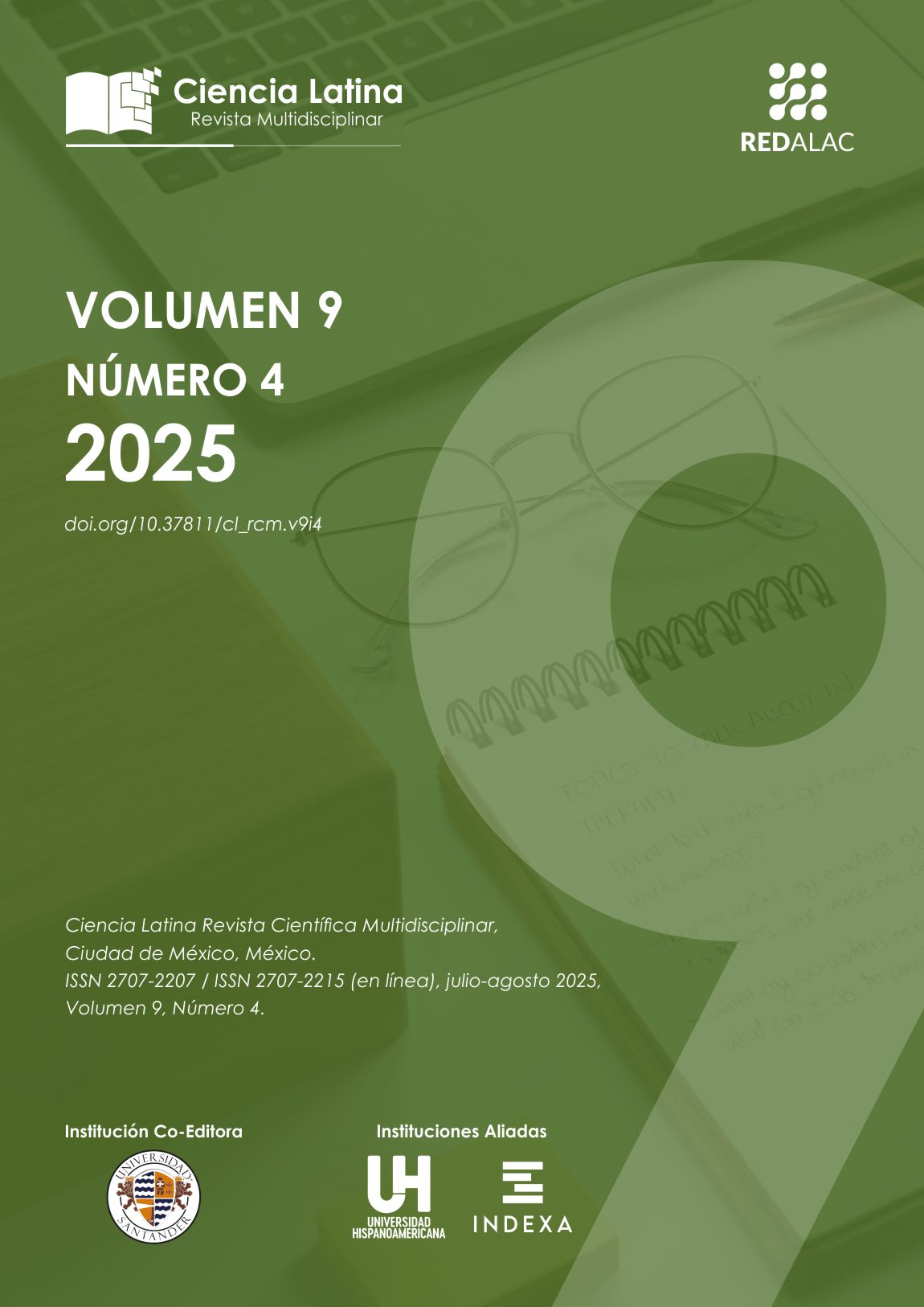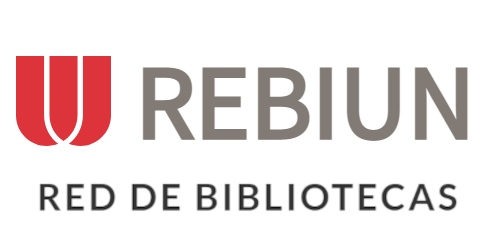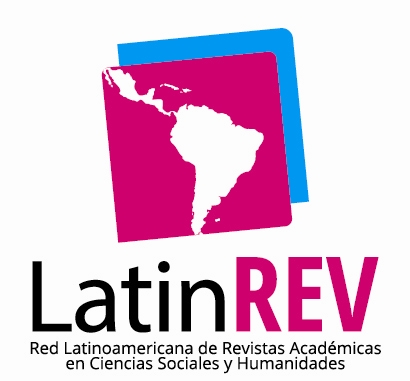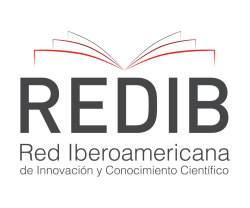Efecto sinérgico de Cefotaxima con Psidium guajava versus Escherichia coli
Resumen
De acuerdo con datos de la OMS para el año 2050, la proporción total de muertes directamente relacionadas con la resistencia antimicrobiana será superior a la sumatoria de otras patologías lo cual representa un desafío significativo en el tratamiento de las infecciones. E. coli es reconocida por su gran capacidad para desarrollar resistencia a múltiples antibióticos. El objetivo del presente trabajo fue evaluar el efecto sinérgico del extracto hidroalcohólico de Psidium guajava en presencia de cefotaxima contra E. coli, en un modelo in vitro. La prueba utilizada para la determinación de la sensibilidad a antibióticos fue la de difusión en disco o de “Kirby-Bauer”. Dentro de los resultados obtenidos, Cefotaxima mostró un halo de inhibición contra el crecimiento de E. coli de 22.46 mm para el control negativo, y para el control positivo fue de 26.093 mm, lo cual representa un incremento de un 16.14% en el efecto antibiótico. Se puede concluir que el efecto del antibiótico en presencia del extracto muestra un efecto sinérgico, lo que podría representar una estrategia para combatir la resistencia bacteriana mostrada por la bacteria al tratamiento.
Descargas
Citas
Adegoke, AA., Madu, CE., Aiyegoro, OA et al.(2020).Antimicrob Resist Infect Control.Antibiogram and beta-lactamase genes among cefotaxime resistant E. coli from wastewater treatment plant. https://aricjournal.biomedcentral.com/articles/10.1186/s13756-020-0702-4
Alam, M.J., Asma, R., Chowdury, S.S. et al.(2019). Sensitivity pattern of cefotaxime against common uropathogens in vitro in Dhaka, Bangladesh. Drugs Ther Perspect 35, 145–149. https://doi.org/10.1007/s40267-019-00603-1
Amin, M., Sirous, M., Javaherizadeh, H., Motamedifar, M., Saki, M., Veisi, H., Ebrahimi, S., Seyed-Mohammadi, S., & Hashemzadeh, M. (2018). Antibiotic resistance pattern and molecular characterization of extended-spectrum β-lactamase producing enteroaggregative Escherichia coli isolates in children from southwest Iran. Infection And Drug Resistance, Volume 11, 1097-1104. https://doi.org/10.2147/idr.s167271
Aminov, R. I. (2010). A Brief History of the Antibiotic Era: Lessons Learned and Challenges for the Future. Frontiers In Microbiology, 1. https://doi.org/10.3389/fmicb.2010.00134
Bergholz, P. W., Noar, J. D., & Buckley, D. H. (2011). Environmental patterns are imposed on the population structure of Escherichia coli after fecal deposition. Applied and Environmental Microbiology, 77(1), 211-219. https://doi.org/10.1128/AEM.01880-10
dCalvo, J., & Martínez-Martínez, L. (2009). Mecanismos de acción de los antimicrobianos. Enfermedades Infecciosas y Microbiología Clínica, 27(1), 44-52. https://doi.org/10.1016/j.eimc.2008.11.001
Division, A. R. (2022). Global antimicrobial resistance and use surveillance system (GLASS) report:. https://www.who.int/publications/i/item/9789240062702
García, A., & Fox, J. G. (2021). A one health perspective for defining and deciphering escherichia coli pathogenic potential in multiple hosts. Comparative Medicine, 71(1), 3-45. https://doi.org/10.30802/AALAS-CM-20-000054
Geurtsen, J., de Been, M., Weerdenburg, E., Zomer, A., McNally, A., & Poolman, J. (2022). Genomics and pathotypes of the many faces of Escherichia coli. FEMS Microbiology Reviews, 46(6), fuac031. https://doi.org/10.1093/femsre/fuac031
Giono-Cerezo, S., Santos-Preciado, J. I., Morfín-Otero, M. D. R., Torres-López, F. J., & Alcántar-Curiel, M. D. (2020). Resistencia antimicrobiana. Importancia y esfuerzos por contenerla. Gaceta Médica de México, 156(2), 3610. https://doi.org/10.24875/GMM.20005624
Gramundi, I., Albornoz, E., Boutureira, M., Rapoport, M., Gomez, S., Corso, A., Castro, G. y Faccone, D.(2022). Characterization of third generation cephalosporin-resistant Escherichia coli clinical isolates from Ushuaia, Argentina.Revista Argentina de Microbiología 55(1). https://doi.org/10.1016/j.ram.2022.06.002
Gutierrez, D., Guerrero, A. L., Chávez , N. A., Avelar, F. J., & Ornelas, I. G. (2023). Psidium guajava L.: From byproduct and use in traditional Mexican medicine to antimicrobial agent. Frontiers In Nutrition, 10. https://doi.org/10.3389/fnut.2023.1108306
Hernández, J., Sánchez, G., Castruita, D., González, A., Acevedo, E., Díaz, A., Barrientos,G., & Cisneros, J. Patrón de sensibilidad de E. coli en el Centro Médico Nacional del Bajío [Sensitivity pattern of E. coli at the National Medical Center of Bajío]. Rev Med Inst Mex Seguro Soc. 2022 Aug 31;60(5):503-510. Spanish. PMID: 36048621; PMCID: PMC10396012.
Huynh, H. D., Nargotra, P., Wang, H. D., Shieh, C., Liu, Y., & Kuo, C. (2025). Bioactive Compounds from Guava Leaves (Psidium guajava L.): Characterization, Biological Activity, Synergistic Effects, and Technological Applications. Molecules, 30(6), 1278. https://doi.org/10.3390/molecules30061278
Joshi, D. M., Pathak, S. S., Banmare, S., & Bhaisare, S. S. (2023). Review of Phytochemicals Present in Psidium guajava Plant and Its Mechanism of Action on Medicinal Activities. Cureus. https://doi.org/10.7759/cureus.46364
Kannan, R., Anil, A., Thomas, P., Raju, N. S., & Reji, S. M. (2024). Antibiotic Susceptibility Profiling of Gram-Positive and Gram-Negative Bacterial Isolates in a Tertiary Care Hospital: Establishment of an Antibiogram. Cureus. https://doi.org/10.7759/cureus.60542
Kumar, M., Tomar, M., Amarowicz, R., Saurabh, V., Nair, M. S., Maheshwari, C., Sasi, M., Prajapati, U., Hasan, M., Singh, S., Changan, S., Prajapat, R. K., Berwal, M. K., & Satankar, V. (2021). Guava (Psidium guajava L.) leaves: Nutritional composition, phytochemical profile, and health-promoting bioactivities. Foods, 10(4), 752. https://doi.org/10.3390/foods10040752
Kwun, M. S., & Lee, D. G. (2024). Bacterial apoptosis-like death through accumulation of reactive oxygen species by quercetin in Escherichia coli. Journal of Microbiology and Biotechnology, 34(7), 1395-1400. https://doi.org/10.4014/jmb.2403.03057
Lopez Mamani, G. I. (2023). Perfil de resistencia antimicrobiana de Escherichia coli y Klebsiella pneumoniae en pacientes que acudieron al Hospital del Norte durante diciembre 2022 – abril 2023. Revista Científica de Salud UNITEPC, 10(2), 8-16. https://doi.org/10.36716/unitepc.v10i2.627
Manekeng, H. T., Mbaveng, A. T., Ntyam Mendo, S. A., Agokeng, A.-J. D., & Kuete, V. (2019). Evaluation of acute and subacute toxicities of psidium guajava methanolic bark extract: A botanical with in vitro antiproliferative potential. Evidence-based Complementary and Alternative Medicine : eCAM, 2019, 8306986. https://doi.org/10.1155/2019/8306986
Mitra, S., Bhesania Hodiwala, A. V., & Kar, H. (2024.). Susceptibility and synergistic effects of guava plant extract and antimicrobial drugs on Escherichia coli. Cureus, 16(1), e52345. https://doi.org/10.7759/cureus.52345
Möwes, M., Kandanda, G. K., Nangolo, L. N., Shafodino, F. S., & Mwapagha, L. M. (2025). Qualitative phytochemical profiling, and in vitro antimicrobial and antioxidant activity of Psidium guajava (Guava). PLoS ONE, 20(4), e0321190. https://doi.org/10.1371/journal.pone.0321190
OPS/OMS.(2023).Resistencia antimicrobiana: una amenaza real. Organización Panamericana de la Salud. https://www.paho.org/es/noticias/21-11-2023-resistencia-antimicrobiana-amenaza-real
Osonga, F. J., Akgul, A., Miller, R. M., Eshun, G. B., Yazgan, I., Akgul, A., & Sadik, O. A. (2019). Antimicrobial Activity of a New Class of Phosphorylated and Modified Flavonoids. ACS Omega, 4(7), 12865-12871. https://doi.org/10.1021/acsomega.9b00077
Padda, I. S., & Nagalli, S. (2023). Cefotaxime. En StatPearls. StatPearls Publishing. http://www.ncbi.nlm.nih.gov/books/NBK560653/
Patel, P., Wermuth, H. R., Calhoun, C., & Hall, G. A. (2023). Antibiotics. En StatPearls. StatPearls Publishing. http://www.ncbi.nlm.nih.gov/books/NBK535443/
Piña, L. M. P., & Hinostroza, K. A. A. (2021). Mecanismos de resistencia de Escherichia coli en América Latina. Revista Vive, 4(11), 203-216. https://doi.org/10.33996/revistavive.v4i11.88
Porras, F. D., Flores, K., & Muñoz, J. E. (2022). Evaluación de la resistencia a los antibióticos de cepas de Escherichia coli aisladas en carne de cerdo comercializada en los mercados municipales de la ciudad de Guatemala. Ciencia Tecnologí¬A y Salud, 9(2), 182-188. https://doi.org/10.36829/63cts.v9i2.1058
Secretaria de Salud.(2024).Guia para la vigilancia por laboratorios de la resistencia a los antimicrobianos. https://www.gob.mx/cms/uploads/attachment/file/943601/Gu_a_para_la_Vigilancia_por_Laboratorio_de_la_Resistencia_a_los_Antimicrobianos.pdf
SiSilva-Vega, M., Bañuelos-Valenzuela, R., Delgadillo-Ruiz, L., Gallegos-Flores, P., Meza-López, C., Valladares-Carranza, B., & Echavarría-Cháirez, F. (2020). Caracterización química de extracto alcohólico de hoja de guayaba (Psidium guajava) y su efecto como inhibidor de movilidad para Escherichia coli O157:H7. Abanico veterinario, 10. https://doi.org/10.21929/abavet2020.26
Tamma, P. D., Doi, Y., Bonomo, R. A., Johnson, J. K., Simner, P. J., Tamma, P. D., Doi, Y., & Bonomo, R. A. (2019). A Primer on AmpC β-Lactamases: Necessary Knowledge for an Increasingly Multidrug-resistant World. Clinical Infectious Diseases, 69(8), 1446-1455. https://doi.org/10.1093/cid/ciz173
Tang, K. W. K., Millar, B. C., & Moore, J. E. (2023). Antimicrobial resistance (AMR). British Journal Of Biomedical Science, 80. https://doi.org/10.3389/bjbs.2023.11387
Tello, M., Ocejo, M., Oporto, B., & Hurtado, A. (2020). Prevalence of cefotaxime-resistant Escherichia coli isolates from healthy cattle and sheep in northern Spain: Phenotypic and genome-based characterization of antimicrobial susceptibility. Applied and Environmental Microbiology, 86(15), e00742-20. https://doi.org/10.1128/AEM.00742-20
Vera Carrasco, O. (2012). Normas y estrategias para el uso racional de antibióticos. Revista Médica La Paz, 18(1), 73-81. http://www.scielo.org.bo/scielo.php?script=sci_abstract&pid=S1726-89582012000100012&lng=es&nrm=iso&tlng=es
World Health Organization: WHO. (2023). Antimicrobial resistance. https://www.who.int/news-room/fact-sheets/detail/antimicrobial-resistance
Derechos de autor 2025 Diana Maldonado Perez , Georgina Almaguer Vargas, José Ramón Montejano Rodríguez, Ana Hilda Figueroa Gutiérrez, Marco Antonio Becerril Flores, Mirna Elizabeth Ruiz Anaya

Esta obra está bajo licencia internacional Creative Commons Reconocimiento 4.0.











.png)




















.png)
1.png)


